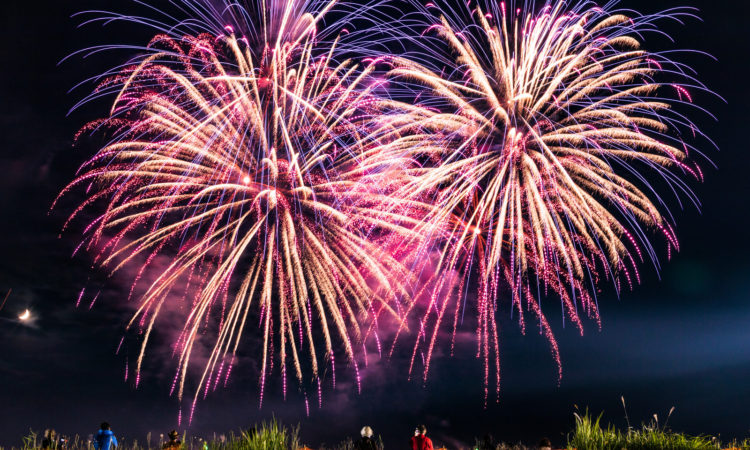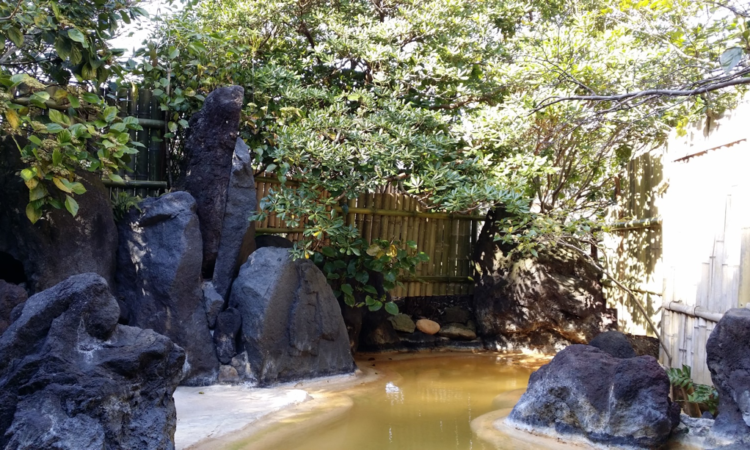The History of The Land of The Rising Sun: Prehistoric to Classical Japan
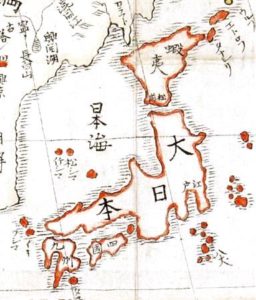
Japan has had a long, varied and styled history, characterised by eras of isolationist, semi-open and expansionist periods that have shaped the culture and customs of Japan as we know it today. In this first “a look at the history of the Land of the Rising Sun” we shall look through Prehistoric and Ancient Japan, to Classical Japan.
Prehistoric and Ancient Japan
Palaeolithic Period
During the glacial periods of history, land bridges have linked the Japanese archipelago with the main Asian continent via the Sakhalin Islands to the north and the Ryukyu Islands and Taiwan in the south since the beginning of the current Quaternary glaciation which started 2.58 million years ago.
It is through these land bridges that the islands of Japan were originally inhabited. The earliest firm evidence of human habitation is of the early Upper Palaeolithic hunter-gatherers from 40,000 years ago, when Japan was separated from the continent. Axes dating back to 32-38,000 years ago were found in 224 sites in Honshu and Kyushu and are unlike anything else found in neighbouring Asian countries. They have been used as evidence for the first record of Homo Sapiens in Japan.
Jōmon Period
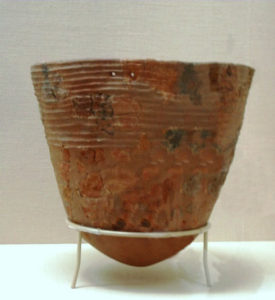 The Jōmon period of prehistoric Japan spans from around 12,000 BC to around 1,000 BC. At this time, Japan was inhabited by a hunter-gatherer culture that reached a considerable degree of sedentism (living in one location) and cultural complexity. The name Jōmon translates to “cord-marked” and is related to the type of pottery the Jōmon people were known for, where length of cord would be pressed into wet pottery to create intricate designs and patterns. The Jōmon pottery is generally accepted by leading scholars to be among the oldest in East Asia and the world.
The Jōmon period of prehistoric Japan spans from around 12,000 BC to around 1,000 BC. At this time, Japan was inhabited by a hunter-gatherer culture that reached a considerable degree of sedentism (living in one location) and cultural complexity. The name Jōmon translates to “cord-marked” and is related to the type of pottery the Jōmon people were known for, where length of cord would be pressed into wet pottery to create intricate designs and patterns. The Jōmon pottery is generally accepted by leading scholars to be among the oldest in East Asia and the world.
Yayoi Period
The Yayoi people, an ancient ethnic group who migrated to Japan from the East Asia mainland, brought new technology and modes of living to the Japanese archipelago. It quickly took over the Jōmon culture and spread out from northern Kyushu. The spreading culture quickly moved to the main island of Honshū, mixing with the native Jōmon culture. Until recently, the date of the change was thought to be around 400 BC, but recent radio-carbon evidence suggests a date that is up to 500 years earlier between the dates of 1,000 and 800 BC.
Once again, this period was named after pottery when a new type of pottery of Yayoi descent was discovered in the Yayoi district in Tokyo in 1884. Though hunting and foraging continued throughout this period, the Yayoi people ushered in a new reliance on agriculture. Bronze and iron tools were imported from China and Korea and then continued to be produced within Japan. This period also saw the introduction of weaving and silk production, glassmaking and new techniques of woodworking.
While the Yayoi technologies originated from the Asian mainland there is much debate among scholars as to what extent their spread was accomplished by means of migration, a diffusion of ideas or possibly both. The theory of migration is supported by genetic and linguistic studies. Popular scholar Hanihara Kazuro has suggested that the immigrant influx into the Japanese archipelago from the mainland numbered from 350 – 3,000 per annum.
Modern Japanese people are genetically more similar to the Yayoi people than to the Jōmon people, though this is clearer in the south than in the north, where the Ainu people bear significant resemblance to the Jōmon people. It took time until the Yayoi people and their descendants displaced and intermixed with the Jōmon, who continued to live in northern Honshu until the end of the eighth century.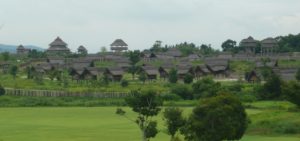
It was here that the population of Japan began to increase rapidly, perhaps with a 10-fold rise over the Jōmon period. Calculations estimate that the population size by the end of the Yayoi period was around 1.5 million to 4.5 million. This was brought about by greater health and nutrition from changes in stratification of society and tribal warfare.
During this period, the Yayoi tribes gradually coalesced into a number of kingdoms. The earliest written work of history to mention Japan, The Book of Han, completed around 82 AD states that Japan, referred to as Wa was divided into 100 different kingdoms. Another later Chinese work called Wei Zhi states that by 240 AD a single powerful kingdom called Yamatai had managed to ascend and gain a foothold among the other divided clans. Though historians still continue to debate the location and other aspects of Yamatai.
Kofun Period (c. 250-538)
During the following Kofun period, most of Japan was gradually unified under a single kingdom, the Yamato line and state. The centre of this new unified state was that of the Yamato in the Kinai region in central Japan. The rulers of this Yamato state were a hereditary line of emperors who still rule to this day, making them the world’s longest dynasty. It is said that the line of Yamato emperors can trace their ancestry back to Amaterasu the Sun Goddess of the Shinto religion which helped with their plight of unifying Japan under their banner.
The rulers of Yamato mostly used military conquest to extend their power across Japan and pave a path with their names inscribed upon it. However, their preferred method of expansion was to convince local leaders to accept their authority in exchange for positions of influence within their governmental system. The powerful clans who joined the Yamato state became known as the uji.
The leaders of Yamato sought formal diplomatic recognition from China and tried to earn it by sending emissaries, the Five Kings of Wa, to China as a form of strengthening their political legitimacy. Craftsmen and scholars from China and the Three Kingdoms of Korea played an important role in transmitting key continental technologies and administrative skills to Japan during this period.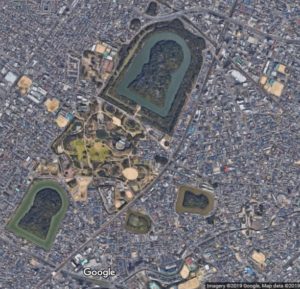
The symbol of growing power of the new leaders of the Japanese archipelago was that of burial mounds known as Kofun. Constructed from AD 250 onwards they were of massive scale such as the Daisen Kofun, a 500-metre-long keyhole shaped burial mound that took huge teams of laborers fifteen years to finish. The Kofun were often filled with and surrounded by haniwa clay sculptures depicting warriors and horses.
Classical Japan
Asuka Period (538 – 710)
Beginning in 538 AD the Asuka Period brought the introduction of the Buddhist religion into Japan from the Korean kingdom of Baekje. Since this point Buddhism has coexisted with the native religion of Japan, Shinto, in what is known today as Shinbutsu-shūgo. The name of this period is drawn from the de facto imperial capital of Asuka in the Kinai region.
During the beginning of the Asuka period, Iranian, Persian and Eurasion influence reached its peak, with it being suggested that Persian and Sycthian sailors had settled in Japan and were granted the title of feudal lords by the emperor. In turn having influence on the aristocratic system and art of Japan. Persia and Japan were connected through the Silk Road at this time and established good diplomatic and economic relations.

In 587 the Buddhist Soga clan took control of the government and controlled Japan from behind the scenes for upwards of sixty years. Prince Shōtoku, a legendary and respected figure in the Japanese history, was a staunch advocate of Buddhism and the Soga cause, due to his partial Soga descent. He served as the regent and de-facto leader of Japan from 594-622. In his time he authored the Seveteen-article constitution, a Confucian-inspired code of conduct for officials and citizens of Japan and also attempted to introduce a merit-based civil service called the Cap and Rank system. It was also in 607 AD that Prince Shōtoku introduced the Japanese name for Japan that is still in use to this day when insulting China in a letter to their own regent, Nihon, Land of the Rising Sun.
In 645, the Soga clan were overthrown in a coup launched against them by Prince Naka no Oe and Fujiwara no Kamatari of the now famous Fujiwara clan. Their government designed and implemented the far-reaching Taika Reforms, which began with land reform based on Confucian ideas and philosophies from China. This helped to nationalise all land in Japan, help distribute it equally among all cultivators, and began the compilation of a household registry system for the basis of taxation. With the true aim of the reforms to bring about greater centralisation and to assist in enhancing the power of the imperial court. Even today the impact of these reforms can be seen in Japanese cultural life.
The Jinshin War of 672 took place after the reforms, a bloody conflict between Prince Oama and his nephew Prince Otomo. These two were rivals to the throne, and their battles became a major catalyst for further administrative reforms within Japan. Culminating with the implementation of the Taiho Code, which consolidated existing statutes and established the structure of a central government and subordinate local governments. These legal reforms created the Ritsuryo state, a system of Chinese-style centralised governments that remained in place for half a millennium.
Nara Period (710-794)
In 710 the government constructed a new capital at Heiko-Kyo, now modern Nara. During this period the first two books in Japan appeared, the Kojiki and Nihon Shoki, which are legendary extant chronicles that accounts Japan’s creation myth and history in its early years and how the current ruling Yamato line are direct descendants of the Gods. If you would like to know more about this please check out Guidable’s other articles on Japanese mythology such as this article.
Japan suffered many setbacks and natural disasters during this period, including wildfires, droughts, famines, and outbreaks of disease like smallpox in 735 -737 that killed a quarter of the population. The reigning emperor of the time, Emperor Shomu, feared it was his lack of piousness that had caused the trouble Japan was reeling from. In response he increased the Government’s promotion of Buddhism, which included the construction of temple Todai-ji. Despite this Japan still entered into a phase of population decline that continued into the next period.
Heian Period (794 -1185)
 In 784, the capital moved briefly to Nagaoka-kyo, then again in 794 to Heian-kyo where modern Kyoto is located, which remained the capital until 1868. The court’s political power was soon passed to the Fujiwara clan, a family of court nobles who grew increasingly close to the imperial family through intermarriage. Again in 812 – 814 Japan was hit by a pandemic. Smallpox killed almost half of the Japanese population.
In 784, the capital moved briefly to Nagaoka-kyo, then again in 794 to Heian-kyo where modern Kyoto is located, which remained the capital until 1868. The court’s political power was soon passed to the Fujiwara clan, a family of court nobles who grew increasingly close to the imperial family through intermarriage. Again in 812 – 814 Japan was hit by a pandemic. Smallpox killed almost half of the Japanese population.
In 858, Fujiwara no Yoshifusa declared himself regent to the current underage Emperor. His Son Fujiwara no Mototsune created the office of kampaku, which was made to rule in place of an adult reigning emperor. An exceptional statesman known as Fujiwara no Michinaga became kampaku in 996 governed during the height of Fujiwara clan’s power. The Fujiwara clan managed to hold onto power for as long as until 1086, when Emperor Shirakawa ceded the throne to his son, Emperor Horikawa but continued to exercise political power himself, establishing the practice of cloistered rule. Where the reigning Emperor would function as a figurehead while the real authority was held by a retired predecessor behind the scenes.
Throughout this period, the power of the imperial court declined, becoming too obsessed with power struggles and self-absorbed pursuits of artistic noble beliefs, that it neglected the administration of government outside the capital. The years of nationalisation of land under the ritsuryo state decayed and frayed as various noble families and orders succeeded in securing tax-exempt status for their private shoen manors. At the turn of the eleventh century, more land in Japan was controlled by private shoen owners rather than the central government, depriving the imperial court of the tax revenue needed to pay for its national army.
During this time the owners of shoen started up their own armies of samurai warriors. Two key large families known as the Taira and Minamoto clans, acquired large armies and many shoen outside the capital. The central government then began to use these two warrior clans to help suppress rebellions and piracy. During the late-Heian period, Japan’s population finally stabilised after hundreds of years of decline.
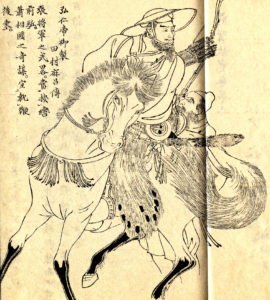
During the early years of the Heian Period, the imperial court managed to successfully consolidate its control over the Emishi people of northern Honshu, descendants of the Jōmon people. Otomo no Otomaro was the first man the court granted the title of seii tai-shogun or Great Barbarian Subduing General. In 802 seii tai-shogun Sakanoue no Tamuramaro subjugated the Emishi people who were led by their leader Aterui. After the multiple wars, including the Nine Years War and the Three Years War between clans to decide who would get authority of Northern Honshu, Fujiwara no Kiyohira of the Fujiwara clan took full power and controlled the area for the next century from their capital of Hiraizumi.
In 1156, there was a dispute over succession to the throne and two rival claimants emerged, Emperor Go-Shirakawa and Emperor Sutoku. They both hired the Taira and Minamotot clans in hopes of securing the throne by military force. During this war the Taira clan leader Taira no Kiyomori defeated the Minamoto clan, and used the opportunity to help accumulate power for himself, installing his own grandson Antoku as Emperor. This lead to an intense rivalry between the two clans, and as a result the power struggle and dispute lead to the Heiji Rebellion in 1160.
Their intense rivalry and battle continued between the two clans, culminating with the bloody Genpei war in 1185 when a force commanded by Minamoto no Yoshitune scored a decisive victory at the Battle of Dan-no-ura, making Minamoto no Yoritomo and his retainers the de facto rulers of Japan.
The Story Continues…
We shall end out first article on the history of Japan here, we have already covered a large part of Japanese history in this article alone and next time we will pick up in the era of Medieval Japan and how Minamoto no Yoritomo chose to rule as the Shogun of Japan.



